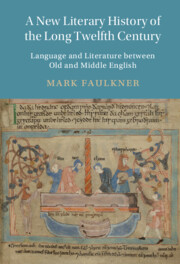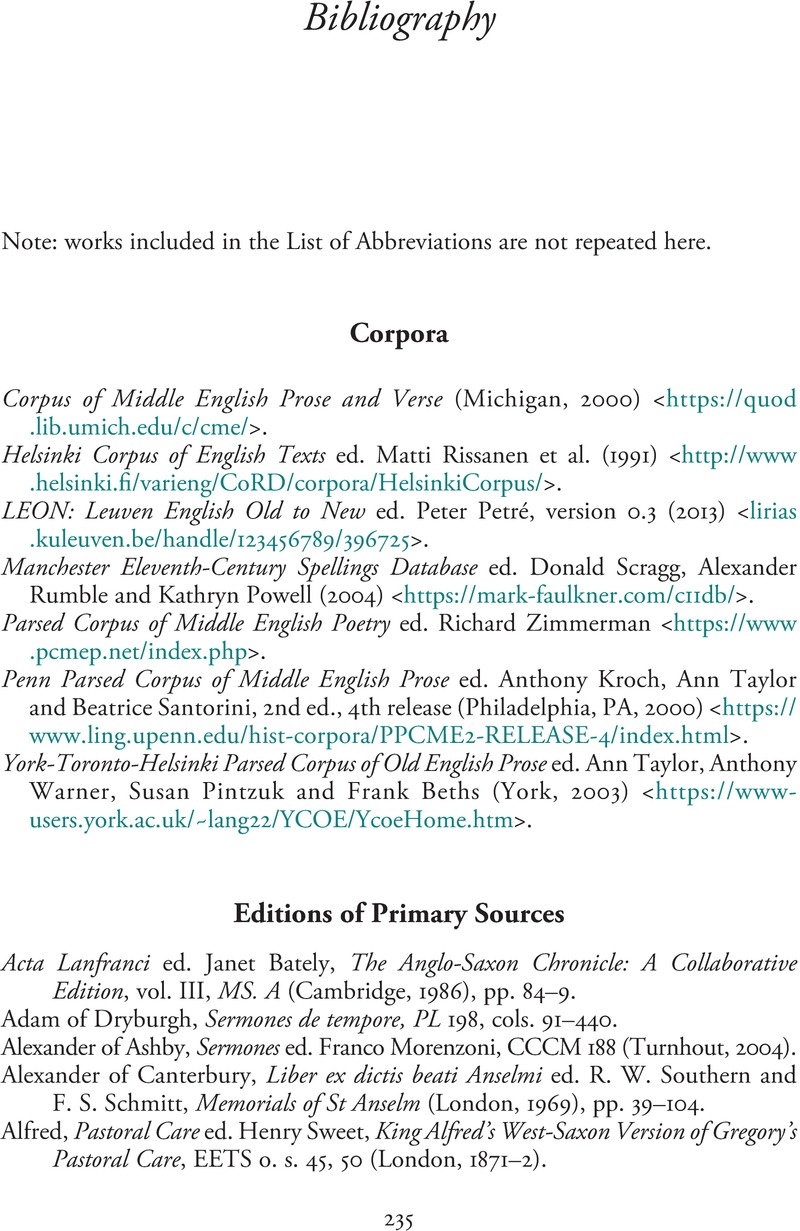 A New Literary History of the Long Twelfth Century
A New Literary History of the Long Twelfth Century Book contents
- A New Literary History of the Long Twelfth Century
- Cambridge Studies in Medieval Literature
- A New Literary History of the Long Twelfth Century
- Copyright page
- Dedication
- Contents
- Figures
- Acknowledgements
- Conventions Used
- Abbreviations
- Part I Preliminaries
- Part II The Affordances of English
- Bibliography
- Index
- Cambridge Studies in Medieval Literature
- References
Bibliography
Published online by Cambridge University Press: 14 July 2022
- A New Literary History of the Long Twelfth Century
- Cambridge Studies in Medieval Literature
- A New Literary History of the Long Twelfth Century
- Copyright page
- Dedication
- Contents
- Figures
- Acknowledgements
- Conventions Used
- Abbreviations
- Part I Preliminaries
- Part II The Affordances of English
- Bibliography
- Index
- Cambridge Studies in Medieval Literature
- References
Summary

- Type
- Chapter
- Information
- A New Literary History of the Long Twelfth CenturyLanguage and Literature between Old and Middle English, pp. 235 - 277Publisher: Cambridge University PressPrint publication year: 2022
